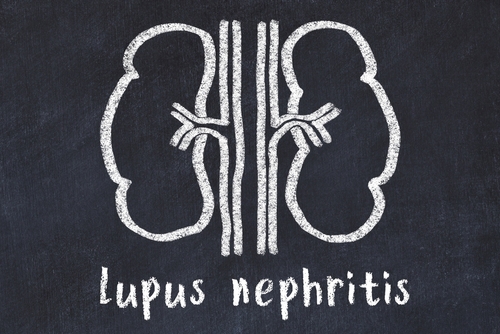
Trans-fatty acids (TFAs), unsaturated fatty acids, occur naturally in ruminant fats and dairy products; TFAs are produced by biohydrogenation in ruminant gut. However, according to Anupam Chandra, MD, and colleagues most TFAs in modern diets are found in industrial processed food, created by hydrogenating vegetable and fish oils. Margarines, crackers, and deep-fried foods contain partially hydrogenated TFAs due to properties such as long shelf life and temperature stability.
Effects of industrial and ruminant TFAs on cardiovascular risk factors may differ. Industrial TFAs have negative effects on blood lipids as increased low-density lipoprotein (LDL) cholesterol and decreased high-density lipoprotein (HDL) cholesterol levels as well as triglycerides in healthy individuals, contributing to the strong association between consumption of industrial TFAs and cardiovascular disease risk.
In patients who are recipients of a renal transplant, dyslipidemia is a major contributor to cardiovascular disease, a leading cause of death in that patient population. When consumed in amounts normally occurring in diet, ruminant TFAs do not seem to influence lipid profile; studies have shown neutral associations with TFAs and the risk of cardiovascular disease. There are few available data on associations between TFA consumption and long-term outcomes following renal transplantation.
Dr. Chandra et al. recently conducted an observational cohort study to examine whether there is an association between plasma phospholipid levels of industrial and ruminant TFAs and all-cause and cardiovascular mortality overall and death censored graft loss in renal transplant recipients. Study results were reported in the Journal of Renal Nutrition [2019;29(3):169-180].
The study was conducted in Norway, where consumption of TFAs decreased from ~5% of total consumption in the late 1950s to ~1% in the mid 1990s. The cohort of 2345 eligible participants was created from a total of 2837 patients with end-stage renal disease who underwent renal transplantation between September 30, 1999, to October 13, 2011. Of the eligible patients, 344 were missing key laboratory data, sample volume was insufficient for determination of fatty acids in 11 patients, and plasma TFAs were not adequately quantified in two patients, resulting in a final cohort of 1988 patients.
Clinical data were obtained from medical records and end point data were provided by the Norwegian Renal Registry. Cox proportional hazard regression was used to estimate the multivariable adjusted hazard ratios (HRs) for all-cause mortality and overall renal graft loss. The analyses also included a proportional hazard regression model for the subdistribution of competing risks as described by Fine and Gray.
Patients were stratified into tertiles based on plasma industrial TFA levels and plasma ruminant levels: plasma industrial TFA, tertile 1 ≤0.25 in weight percentage (wt%), tertile 2, 0.26-0.33 wt%, tertile 3, ≥0.34 wt%; plasma ruminant TFA, tertile 1, ≤0.61 wt%, tertile 2, 0.62-0.77 wt %, tertile 3, ≥0.78 wt%. Values were recorded for patients in the 1999-2004 era (former era, n=902) and for patients in the 2005-2011 era (latter era, n=1086).
Those in the upper tertile of industrial TFA levels were older and had lower albumin levels in both the former and the latter era of the study period. Across both eras, higher levels of HDL cholesterol were seen in patients in the upper tertile of plasma ruminant TFA levels. In the former era, median plasma industrial TFA levels were 0.29 wt%, decreasing to 0.20 wt% in the latter era. Plasma levels of ruminant TFAs remained stable across the two eras.
The standard immunosuppression protocol included basiliximab induction and maintenance therapy of a combination of a cell proliferation inhibitor, prednisolone, and a calcineurin inhibitor. Up until 2007, the calcineurin inhibitor of choice was cyclosporine for all patients; following 2007, approximately half of the patients received tacrolimus and half received cyclosporine. Beginning in 2012, tacrolimus was the drug of choice for all patients. During the overall study period, statin therapy became gradually more common; coverage in 1999-2000 was ~30%, increasing to >70% in the latter era. As per the center’s standard treatment protocol, statins were paused during the first 3 months after renal transplantation.
Median follow-up was 9.6 years. During that period, there were 595 deaths; 225 of the deaths were due to cardiovascular disease, 134 were due to cancer, 159 were due to infectious disease, and 77 were due to other causes. A total of 805 grafts were lost; 497 to recipient death and 308 to death censored graft loss.
In the former era, there were significant crude associations between plasma total TFA levels and mortality (HR, 3.42; 95% confidence interval [CI], 1.61-7.19; P=.001) and overall graft loss (HR, 2.22; 95% CI, 1.12-4.39; P=.02). Following multivariable adjustment, there were significant associations between plasma industrial TFA levels and outcomes but not between plasma total TFAs (mortality: HR, 4.44; 95% CI, 1.30-15.14; P=.02; overall graft loss: HR, 4.22; 95% CI, 1.44-12.31; P=.01). There was a significant association between plasma ruminant TFA levels and patient survival in unadjusted analysis; the association was not significant following multivariable adjustment.
In the latter era, there were no associations between plasma total TFA levels and mortality or graft loss. In addition, there were no significant crude or multivariable adjusted associations between plasma industrial or ruminant TFA levels and outcomes. In the latter era (as opposed to the former era), there were no significant associations between cause-specific mortality or death censored graft loss for plasma industrial TFA levels.
There were some limitations to the study cited by the authors, including analysis of fatty acid performed at a single time-point 10 weeks following transplant; changes in TFA consumption would be expected to occur during follow-up. In addition, the 95% confidence intervals in Cox regression and competing risk analysis were quite wide, due to the sample size, raising questions as to the robustness of the findings.
“In this renal transplant cohort, we found significant associations between plasma industrial TFA levels and patient and graft survival in years 1999 to 2004, but no association with survival end points in years 2005 to 2011. The findings suggest that lowering industrial TFA consumption even from a modest intake might beneficially influence health,” the researchers said.
Takeaway Points
- There is an association between high consumption of trans-fatty acids (TFAs) and increased risk of mortality.
- Researchers in Sweden conducted an observational cohort study among renal transplant recipients to examine whether plasma phospholipid levels of industrial and ruminant TFAs were associated with all-cause and cardiovascular mortality, and overall and death censored graft loss in that patient population.
- In the years 1999-2004, plasma industrial TFA levels were significantly associated with survival; in the years 2005-2011, there were no associations between plasma industrial TFA levels and survival.







 © 2025 Mashup Media, LLC, a Formedics Property. All Rights Reserved.
© 2025 Mashup Media, LLC, a Formedics Property. All Rights Reserved.